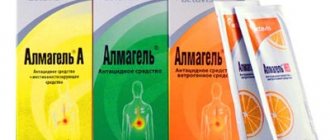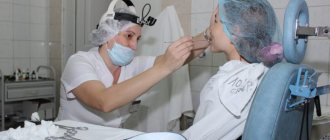Drink poison!
Since ancient times, people have been thinking about how to relieve pain.
The methods used were quite dangerous. Thus, in Ancient Greece, the root of mandrake, a poisonous plant that can cause hallucinations and severe poisoning, even death, was used as an anesthetic. It was safer to use “sleeping sponges.” Sea sponges were soaked in the juice of intoxicating plants and set on fire. Inhalation of the vapors put patients to sleep. In Ancient Egypt, hemlock was used for pain relief. Unfortunately, after such anesthesia, few survived to the operation. The ancient Indian method of pain relief was more effective than others. Shamans always had an excellent remedy at hand - coca leaves containing cocaine. The healers chewed magic leaves and spat on the wounded warriors. Saliva soaked in cocaine brought relief from suffering, and shamans fell into a drug trance and better understood the instructions of the gods.
Article on the topic Drink Poison. Heroin, mercury, DDT and other “drugs” of the past
Chinese healers also used drugs for pain relief. Coca, however, cannot be found in the Middle Kingdom, but there were no problems with hemp. Therefore, the analgesic effect of marijuana has been experienced by more than one generation of patients of local healers.
Local anesthesia - its types, contraindications and complications.
Local anesthesia is a temporary loss of pain in a specific area of the body. With this type of anesthesia, the patient is conscious but does not feel any pain. Local anesthesia is used for simple and short-term operations, as well as in the presence of contraindications to general anesthesia.
Local anesthesia: types
- Epidural anesthesia is a conduction anesthesia, the effect of which is achieved through drug blockade of the spinal root. With this type of anesthesia, using a special catheter, an anesthetic is injected into the epidural space located between the vertebrae. The effect of the drug occurs within 10-25 minutes. They are used during various types of operations in all areas of medicine.
- Terminal anesthesia is anesthesia that is performed with direct influence on the tissue of the required organ. As a rule, this type of anesthesia is produced by lubricating the surface of the mucosa or instilling the necessary anesthetic. Very often used in dental, ophthalmological and urological practice.
- Spinal anesthesia is a type of anesthesia, the effect of which is achieved by introducing an anesthetic into the subarachnoid space by performing a spinal puncture. Quite often used during operations on the pelvic organs, genitourinary system and abdominal cavity. But this local anesthesia is unsafe, since there is a risk of blocking the vascular-motor and respiratory centers.
- Intravenous anesthesia is a type of regional anesthesia performed by injecting an anesthetic into a vein. It is used for short-term and low-traumatic operations on the limbs.
- Conduction anesthesia is the direct injection of novocaine into the nerve or into the tissues surrounding it. Most often, such anesthesia is used for operations on the upper limbs and fingers.
- Intercostal anesthesia is the introduction of an anesthetic into the intercostal space. Used for chest injuries and rib fractures.
- Intraosseous anesthesia is one of the options for intravenous anesthesia, performed by injecting an anesthetic into the spongy substance of the bone, which after some time fills all the veins of the extremities, resulting in pain relief.
Local anesthesia: contraindications
- Allergy to drugs used for local anesthesia.
- The presence of purulent formations at the puncture site.
- State of shock.
- Hypotension.
- In some cases, obesity and spinal deformities.
Local anesthesia: complications
- Damage to the human nervous system, which is accompanied by drowsiness, ringing in the ears and dizziness. Sometimes convulsions may occur.
- Allergic reactions in the form of rashes on the patient’s body, accompanied by itching. In severe situations, anaphylactic shock is possible.
- Low blood pressure, which can lead to cardiovascular collapse.
- The appearance of bradycardia, which can lead to cardiac arrest.
Note: one of the most popular types of general anesthesia is endotracheal anesthesia, which is performed by supplying a narcotic substance and oxygen through a tube inserted directly into the trachea without involving the nasal cavity and mouth in this process.
Until your heart stops
In medieval Europe, methods of pain relief were also not particularly humane. For example, before an operation, a patient was often simply hit on the head with a mallet so that he would lose consciousness. This method required considerable skill from the “anesthesiologist” - it was necessary to calculate the blow so that the patient lost consciousness, but not life.
Bloodletting was also quite popular among doctors of that time. The patient's veins were opened and they waited until he lost enough blood to faint.
Since such anesthesia was very dangerous, it was eventually abandoned. Only the speed of the surgeon saved the patients from painful shock. For example, it is known that the great Nikolai Pirogov spent only 4 minutes amputating a leg, and removed the mammary glands in one and a half minutes.
Life does not shorten, it does not cause addiction. Debunking myths about anesthesia Read more
Indications
External influence in the oral cavity, accompanied by pain:
- on soft tissues of the maxillofacial area;
- on the teeth and in places where they are attached to the jaw bone;
- in the area of the oral cavity.
Pain relief is also indicated for older patients who are in a weakened physical condition, and for people experiencing problems with the functioning of the respiratory and cardiovascular systems.
Let's find out together whether it is painful to remove a wisdom tooth from above or below, and which anesthesia is better to choose.
Read here about treatment and tooth extraction under general anesthesia.
At this address https://zubovv.ru/hirurgiya/udalenie-nerva/kak-ispolzuyut-myishyak-v-stomatologii.html we will talk about modern analogues of arsenic in dentistry.
Laughing gas
Science did not stand still, and over time, other methods of pain relief appeared, for example, nitrous oxide, which was immediately dubbed laughing gas. However, initially nitrous oxide was not used by doctors at all, but by traveling circus performers. In 1844, magician Gardner Colton called a volunteer onto the stage and let him inhale the magic gas. A participant in the performance laughed so hard that he fell off the stage and broke his leg. However, viewers noticed that the victim does not feel pain, as he is under anesthesia. Among those who sat in the hall was the dentist Horace Wells , who instantly appreciated the properties of the wonderful gas and bought the invention from the magician.
Article on the topic
Pulse and spells. What advice from medieval doctors can you listen to?
A year later, Wells decided to demonstrate his invention to the general public and staged a demonstration tooth extraction. Unfortunately, the patient, despite inhaling laughing gas, screamed throughout the entire operation. Those who gathered to look at the new painkiller laughed at Wells, and his reputation came to an end. Only a few years later it became clear that the patient was not screaming from pain, but because he was terribly afraid of dentists.
Among those who attended Wells' unsuccessful performance was another dentist, William Morton , who decided to continue the work of his unlucky colleague. Morton soon discovered that medicinal ether was much safer and more effective than laughing gas. And already in 1846, Morton and surgeon John Warren performed an operation to remove a vascular tumor, using ether as an anesthetic.
What are the types of anesthesia?
Local anesthesia is a general name for several types of procedures that numb very small and superficial areas to fairly large areas of the body. This depends on the location and method of administration of the anesthetic and the goals of the intervention. The following types of anesthesia are distinguished:
- If the drug is applied to the surface of the skin (or mucous membranes), this is superficial anesthesia (terminal). It is used for manipulations in eye clinics, urology, ENT practice or in children, during certain skin procedures.
- The injection of anesthetic drugs into the affected area or surgical field is called infiltration anesthesia. With this method, a needle, starting from the skin, “impregnates” the tissue in the area of manipulation, blocking the sensitivity of the nerve endings.
- If the sensitivity of nerve roots, trunks, ganglia or plexuses is blocked by the introduction of anesthetics, this is conduction anesthesia (or its second name is regional).
- If with the first two methods everything is relatively clear, they can be used directly by the attending physician during manipulations, then conducting a conduction type of anesthesia often requires special conditions and a separate specialist - an anesthesiologist.
And again coca
Medical ether was good for everyone, except that it only provided general anesthesia, and doctors also thought about how to obtain a local anesthetic. Then their eyes turned to the most ancient drugs - cocaine. In those days, cocaine was widely used. They were treated for depression, asthma and stomach upset. In those years, the drug was freely sold in any pharmacy along with cold remedies and ointments for back pain.
In 1879, Russian physician Vasily Anrep published an article on the effects of cocaine on nerve endings. Anrep conducted experiments on himself, injecting a weak solution of the drug under the skin, and found out that this leads to loss of sensitivity at the injection site.
Curious about treatment methods. How our ancestors coped with diseases Read more
The first who decided to try Anrep’s calculations on patients was ophthalmologist Karl Koller . His method of local anesthesia was appreciated - and the triumph of cocaine lasted for several decades. Only over time, doctors began to pay attention to the side effects of the miracle drug, and cocaine was banned. Koller himself was so amazed by the harmful effect that he was ashamed to mention this discovery in his autobiography.
It was only in the 20th century that scientists managed to find safer alternatives to cocaine - lidocaine, novocaine and other drugs for local and general anesthesia.
Types of pain relief
Today, they mainly talk about two types of anesthetics - local and systemic. Such drugs ensure the body's insensitivity to any medical manipulations - some act for a short time and do not have an effect on the entire body as a whole, others plunge a person into a long sleep that can last for hours (as necessary, anesthetics are added during the operation).
Why operate without anesthesia? More details
Entertaining anesthesiology. Part 2: Why is there general anesthesia and the surgeon is local?
Anyone who is interested in the topic of pain management, or “why is general anesthesia and the surgeon is local.”
(Read the article “Entertaining Anesthesiology. Part 1: History of the Science of Pain Management” here.)
If you imagine the path of a pain impulse from a cut finger to the cerebral cortex, it will look like this:
- Along the nerve endings from the skin and subcutaneous tissue, the nerve impulse moves in the form of jumps along the current-insulating areas (myelin sheath) located on the nerve fiber (Ranier nodes) to larger nerve bundles, which in the spinal cord form pathways or tracts ascending to the brain .
- Some of them reach the very cortex, others end in certain parts of the brain - the thalamus and the substantia nigra. It is there that the transformation of the electrical stimulus into the sensory perception of pain occurs and the transfer of this perception to the cerebral cortex for analysis and decision-making on the response to the executive organs.
- In the body, in addition to myelinated ones, there are also non-myelinated nerve fibers, the impulse passes through them, changing the permeability of their membrane. Fibers are collected into bundles, and bundles into plexuses. Some plexuses form synapses and ganglia (nodes) with each other, lying in the connective tissue or inside individual organs.
Knowledge of these mechanisms allows the anesthesiologist to choose the most rational method of pain relief. By blocking the conduction of the pain impulse along the nerve fiber by using local anesthetics, injecting them directly into the wound or onto the mucous membrane (gums, conjunctiva, etc.), it is possible to achieve pain relief, the degree of which will depend on the concentration and volume of the injected anesthetic and the depth of its administration, as well as on how developed the blood supply to the damaged area is or how pronounced the local inflammatory process is.
This type of anesthesia is called terminal or application anesthesia, as it affects the endings (terminals) of nerve fibers. If you block one area of the body with a local anesthetic, for example a finger, then such anesthesia will be called infiltration anesthesia . If you block the conduction of an impulse along a specific nerve fiber or plexus, then this will be conduction anesthesia . And if you cause a blockade of the impulse, interrupting its movement along the spinal tracts, then, accordingly, a spinal cord .
If you inject an anesthetic into a plexus or node responsible for the innervation of a certain area of the body, it will be regional (“regio” is Latin for “region”, hence the word region). Well, accordingly, by acting on the cerebral cortex, you can achieve total anesthesia, in common parlance - general anesthesia.
But local anesthetics cannot achieve general anesthesia. To do this, you will need other substances - drugs, relaxants, tranquilizers and hypnotics.
Let me give you an example: we administered the maximum possible dose of a narcotic analgesic and are trying to operate, but nothing will work out because the muscles will contract. Let's relax the muscles with relaxants, that is, we paralyze all the muscles of the body, including the diaphragm - how will the patient breathe? This is where the fun begins - the technique of induction and maintenance of total anesthesia with artificial ventilation.
First, let's decide who we are giving anesthesia to?
In general, the concept of “giving anesthesia” does not exist. Anesthesia or anesthesia is administered. You can give it on credit, in the mouth and in the face, and anesthesia can be administered. Giving anesthesia is not a professional expression, but this article is not for anesthesiologists.
So, let’s take the simplest situation: a 30-year-old young man with abdominal pain lasting up to a day, for whom surgeons plan to perform an appendectomy, that is, an operation to remove the appendix. Let's go get acquainted. We find out the clinical picture, that is, where, how, when did it get sick, how did the disease progress, and what worries him most at the time of examination?
We also find out about allergies to food and drugs, whether the patient has had previous surgeries, which ones and under what anesthesia. We pay attention to the color of the skin and mucous membranes, their moisture, swelling, etc., since this will determine how, what and at what speed we will infuse into the patient.
We check for loose teeth, piercings and many other things that can lead to complications during surgery, despite the fact that this is the concern of the surgeons. We get acquainted with the tests, radiographs, ultrasound findings, and if necessary, we prescribe additional research methods or ask you to repeat previously performed studies or tests.
The slightest omission at this stage - and there will be a corpse on the operating table.
It should be borne in mind that patients actively read the Internet and think that “the anesthesiologist will figure everything out himself.” And for some reason, some deliberately mislead him, hiding information that is important for the doctor. God forgive them, for they read the Internet...
In my practice, I have encountered individuals who taught me cardiopulmonary resuscitation, motivating their desire to teach by the fact that “they have completed tactical medicine courses” or because “they are rescuers.” Well, okay, the rescuer knows better, he knows better than the doctor, he’s a rescuer!
Preoperative anesthesia process
So, we met, found out, asked questions. We decide on the choice of anesthesia method. In our case, the surgeons plan to perform a laparoscopic appendectomy. This means that through a puncture in the anterior abdominal wall they will insert a video camera into the abdominal cavity, and through two other punctures they will insert instruments - manipulators.
The abdominal cavity will be inflated with carbon dioxide, which means that the position of the patient’s body on the table will not be physiological - head down (Trendelenburg position). The chest organs, intestinal loops, omentum, etc. will shift accordingly. The MVT (minute tidal volume) will decrease. Due to the resorption of carbon dioxide into the blood, blood pressure will rise along with the dilation of blood vessels in the brain. All this must be foreseen in advance - this is the operation plan, which forms the anesthesiological plan.
We prescribe premedication. We include a tranquilizer - Dormikum (the patient will calm down and, if lucky, he will fall asleep in the room and wake up there), a cholinomimetic - Atropine (the secretion of saliva and bronchial mucus will decrease, the heart rate will increase and reflexes from the laryngopharynx will be partially suppressed) and a powerful antiemetic remedy – Octreotide . Some anesthesiologists also prescribe narcotic analgesics.
We give the command “serve” and go to “wash.” We check anesthesia and respiratory equipment, emergency placement for unpredictable difficult access to the respiratory tract, and, if access is predictably difficult, then we call endoscopists in advance. The patient is already asleep at this time. Some yawn and turn their heads, some ask questions, cry, threaten, and so on.
The anesthetist installs an intravenous catheter, and we begin to “drip” saline solution. How much and what kind of solution we pour depends on whether the patient was vomiting and the temperature increased, and if so, how many times, and if it increased, then to what numbers, because for each degree of temperature it is necessary to pour 500 ml of physiology in excess of the calculated physiological losses . And the estimated losses are calculated based on hemoglobin and hematocrit in tests, the amount of urine per day and its specific gravity, and many other indicators.
And this despite the fact that they “shipped us” a healthy body. And if this body were in a state of shock or with an abundance of concomitant diseases, then there would be much more preoperative assessment parameters.
So, the surgeons are “washed up”, the operating nurses are ready and we begin the induction of anesthesia. A mask is placed on the patient’s face, through which pure 100% oxygen is supplied in a large flow and the patient is asked to breathe deeply. This is necessary in order to create an oxygen reserve in his body, since in the next minute we plan to artificially stop his breathing.
Despite the fact that we seem to have provided for everything, this is the most critical stage of anesthesia, at which 90% of all fatal complications occur.
By creating an oxygen depot in the patient’s blood, we try to minimize all these possible complications.
We give the command to the anesthetist to administer a hypnotic intravenously, that is, a drug after which the patient will fall asleep. In Russian anesthesiology, three drugs with a hypnotic effect are used - sodium Thiopental , Propofol / Diprivan and Ketamine .
Next, we introduce a powerful narcotic analgesic ( Fentanyl , which is 100 times stronger in its narcotic effect than the “standard” drug Morphine), and after that a muscle relaxant. Muscle relaxants are short-acting ( Succinylcholine - Lystenon / Ditilin ) and long-acting ( Trakrium , Esmeron , Arduan and others).
As soon as the patient falls asleep, we tightly apply the mask to his face and begin to compress the breathing bag of the anesthesia-respiratory apparatus, thereby providing artificially assisted ventilation of the lungs. As soon as all the patient's muscles relax and his breathing stops completely, we begin tracheal intubation. Using a special instrument - a laryngoscope, we go behind the root of the tongue and lift the epiglottis in order to see the glottis with the vocal cords. We pass a special endotracheal tube with an inflating cuff at its end through the vocal cords.
We visually verify that the tube has been inserted into the trachea and not into the esophagus, and give the nurse the command to inflate the cuff on the tube. We check the tightness of the inflated cuff and the pressure in it so that the overinflated cuff does not cause a bedsore of the tracheal mucosa. Or, conversely, an insufficiently inflated cuff will allow air to pass through, which can go into the stomach, thereby causing passive flow of gastric contents into the trachea and lungs.
We checked - everything is fine. We connect the breathing circuit to the tube and turn on the volume-controlled artificial ventilation mode on the breathing apparatus. We check the peak pressure in the respiratory tract, the compliance of the set inhalation volume and the frequency of mechanical breathing, after which we reduce the oxygen concentration to 30% and its flow to 1.5-2 liters per minute. We insert a phonendoscope into the ears and check the uniformity of ventilation of both lungs of the patient.
We checked - everything is fine. We connect the gaseous anesthetic by opening the dosimeter on the evaporator. We check how effectively the patient is anesthetized by comparing the calculated MAC value (minimum alveolar concentration - it is different for each anesthetic) with the patient’s hemodynamic parameters and, if necessary, further deepen the anesthesia by administering drugs intravenously or increasing the concentration of the anesthetic during inspiration. We change the position of the operating table, not forgetting to first fix the breathing circuit and the patient himself so that he does not accidentally fall off this very table, and give the go-ahead to the surgeons.
During the operation...
While the “enemies are poking around” (that is, surgeons are operating), you cannot relax. We must constantly monitor what is happening in the surgical wound and count the blood-soaked napkins thrown into the basin. One small napkin is 100 ml of blood, one medium is 300 ml, and one large is already 500.
Only we operate laparoscopically, which means there will be no napkins, just as there will be no surgical wound itself - the whole process will have to be monitored on the monitor and screen of the laparoscope. This is called "going by instruments."
For the anesthesiologist, it does not matter whether the operation is open or laparoscopic.
He must not only know the entire course of the operation, but also imagine how experienced the operating surgeon is, and see what floor of the abdomen he is working on, at what stage the operation is going on, whether there are any difficulties, etc. Because it often hurts in the iliac region on the right, and “you have to open up to the sword,” that is, the cause of abdominal pain may not be the appendix at all, but, for example, the gallbladder, or thrombosis of the mesenteric vessels.
Therefore, we carefully monitor our “enemies” (sorry, colleagues) and promptly add drugs, hypnotics or relaxants, increase or decrease the infusion rate, adjust its composition, etc.
Completing the operation
But now the manipulators are removed, carbon dioxide is purged from the abdominal cavity, and the surgeons “start embroidering,” that is, applying skin sutures, installing drains, counting instruments and used napkins.
We turn the ring on the evaporator to zero and increase the flow of the oxygen-air mixture to 6-8 liters/minute in order to ventilate the breathing circuit, thereby ridding the patient’s alveoli of the remaining gaseous anesthetic. We return the operating table to a horizontal position and write off narcotics and potent drugs, fill out the anesthesia protocol, and put our signature on the anesthesia card.
During this time, the anesthetic will finally leave the patient's lungs, and we begin to reverse the neuromuscular block by introducing a special drug that will restore neuromuscular conduction that was blocked by muscle relaxants. But in fact, they try not to do this, since an experienced anesthesiologist knows all his drugs, their duration of action, interactions with other drugs, and even the features of a particular drug depending on the manufacturer.
Therefore, by the end of the operation, the neuromuscular block will be at its end, and we just need to wait until the patient’s spontaneous breathing is restored. And in order for it to recover faster, we will reduce the frequency of mechanical breaths and switch the ventilation mode from forced to auxiliary.
There are a great many signs by which an anesthesiologist determines whether a patient can breathe on his own.
Each anesthesiologist has his own set of these signs, and as soon as the patient makes independent breathing attempts, the supra-cuff space in the oropharynx is sanitized with a napkin, the breathing circuit is disconnected, and the sleeping patient breathes for some time through the endotracheal tube.
And we carefully monitor how effectively he breathes, and after making sure that further respiratory depression does not occur, we deflate the cuff on the tube and remove the tube from the patient’s larynx, that is, we extubate. After this, you need to be doubly careful, since laryngospasm is possible, that is, spasm of the vocal cords, ineffectiveness of spontaneous breathing and many other unpleasant moments associated with the ineffectiveness of the external respiration apparatus.
We wake up the patient, ask “How did you sleep?”, “How did you feel?”, because lately people have gone crazy, and first they say “thank you” and then write complaints. I was once deprived of a prize because one lady dreamed of the actor Dzhigurda while under anesthesia. And so he asked, “Is everything okay?”, They answered, “Excellent!”, and other doctors and nurses heard this - and you, the patient, that is, the client, can write complaints wherever you want.
But here you are, my pretty one, opened your eyes, coughed and even peed. Some also poop. But they suggested taking an enema before the operation. Well, okay, I’m used to it, but I just don’t understand, is it really more pleasant to wash your own feces from your feet than to give an enema? Apparently, people like to shit on their feet...
As a farewell, you, patient, receive an injection of painkiller “into the meat,” that is, intramuscularly, and go to finish your dreams in the recovery room, where I will be next to you for another two hours while you sleep. This is necessary so that, if necessary, additional pain relief, shelter-warm, and take emergency measures in case of bleeding through the drainage, respiratory depression, decrease or increase in pressure, and so on...
In conclusion, let's imagine that the operation is not laparoscopic, but open. You can use exactly the same method of anesthesia, or you can try spinal or epidural anesthesia, but I will write about these types of pain relief next time.
Do not be ill!










